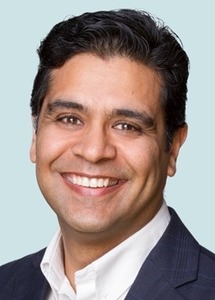Powering Patient-Centric Care with Data-Driven Solutions
// By Ajay Khanna //
 With the emergence of value-based delivery models, the approach to healthcare is significantly evolving. In addition, there has been a significant shift in patient expectations. Patients today are looking for experiences similar to what they get as a consumer of retail, banking, or hospitality. They want to engage with the organizations when they want, where they want, and using the channel of their choice.
With the emergence of value-based delivery models, the approach to healthcare is significantly evolving. In addition, there has been a significant shift in patient expectations. Patients today are looking for experiences similar to what they get as a consumer of retail, banking, or hospitality. They want to engage with the organizations when they want, where they want, and using the channel of their choice.
Building a Single Source of Truth for Patient Information
To deliver the experience that customers expect today, reliable patient data is a must. Patient data must be complete, current, and consolidated. Various business units within an organization typically access, use, and manage their own data sets to solve their own business challenges. Divergence and duplication of data with no single source of truth results in inaccurate and incomplete profiles of providers and patients. To overcome this, all systems and departments working with patients must get the information they require from a single source of patient data. Multiple entities must collaborate and contribute to enrich this single source of data.
Supporting Patient Choice
Many healthcare organizations are adopting a patient-centric approach to providing a consumer-like experience throughout the patient lifecycle. The emphasis is not only on disease management but also on improving the patient’s overall quality of life. Healthcare organizations are considering multichannel forms of engagement where patients can interact with physicians, registered nurses, or other staff using the channel of their choice. Patients have the choice to interact using web portals, emails, phone, and video chats, in addition to office visits. Clinicians and marketing teams are finding ways to share the most relevant information with the consumers at the right time.
It’s not breaking news that healthcare organizations are hampered by data fragmentation. What tools will help them achieve a 360-degree view of patients? How can hospitals keep sensitive data safe and still have a single view of patients that will enable them to personalize communications? In this article, Ajay Khanna, vice president of product marketing at Reltio, discusses the ideal scenario, the “nirvana” that health systems are trying to achieve as well as the challenges to getting there. The benefits are tangible—better prevention and disease management, fewer readmissions. What are the tools to get there?
This content is only available to members.
Please log in.
Not a member yet?
Start a free 7-day trial membership to get instant access.
Log in below to access this content:
